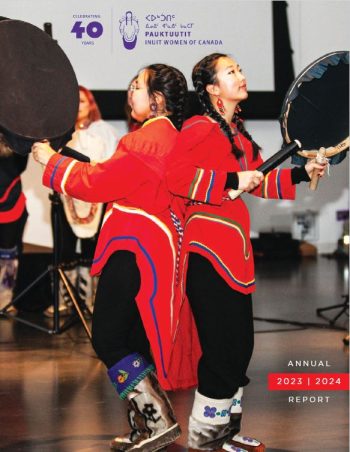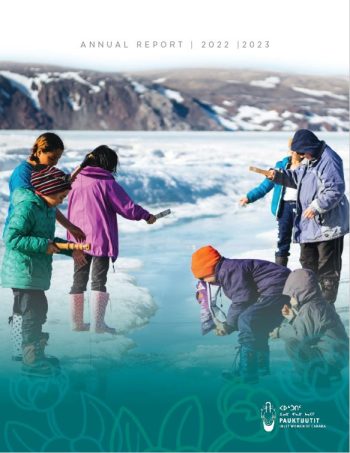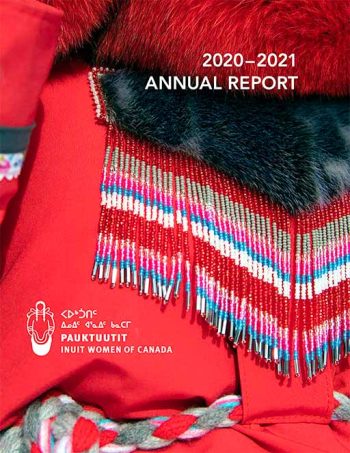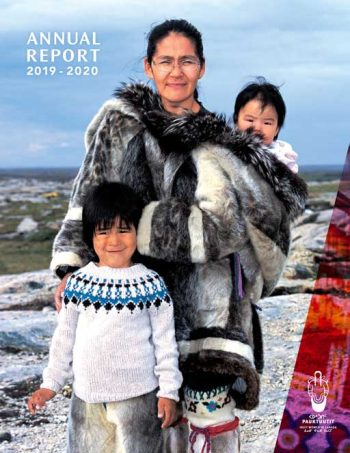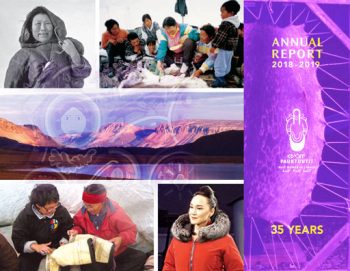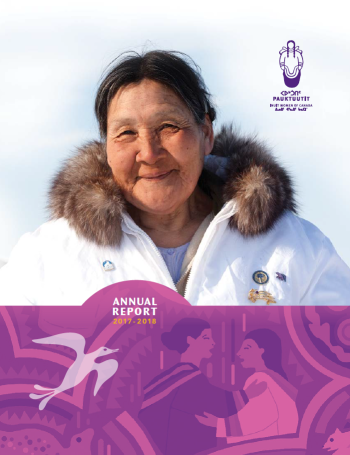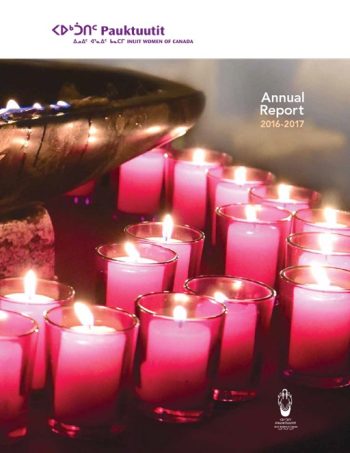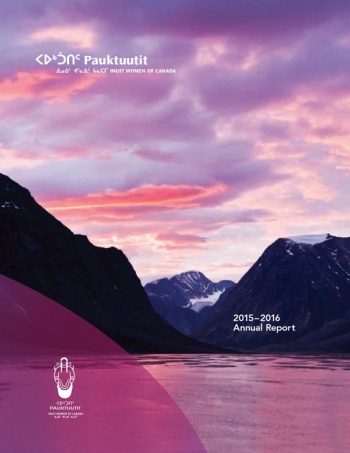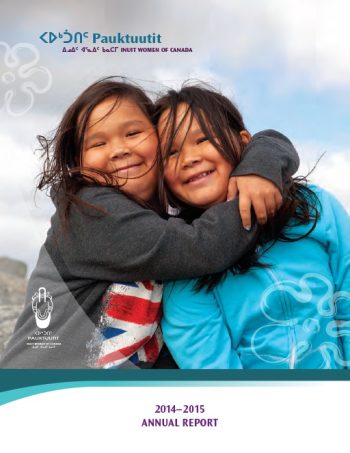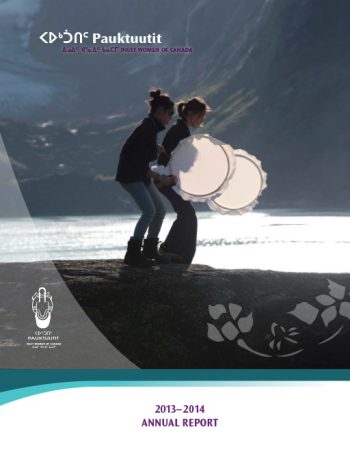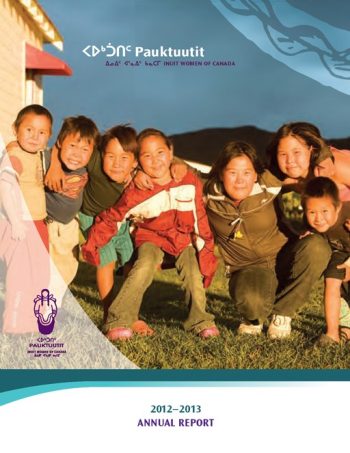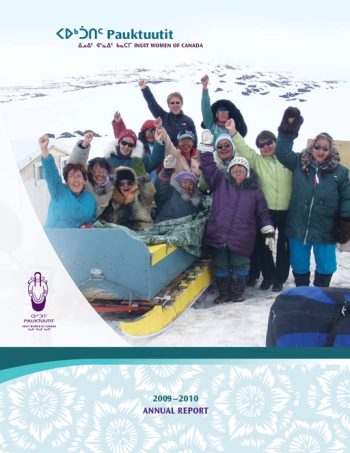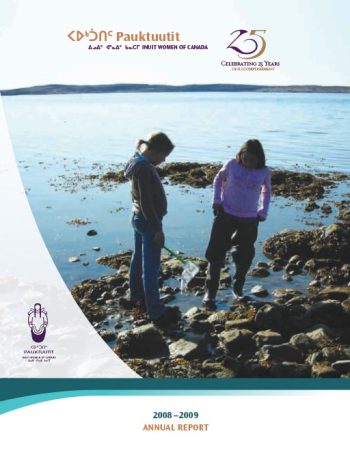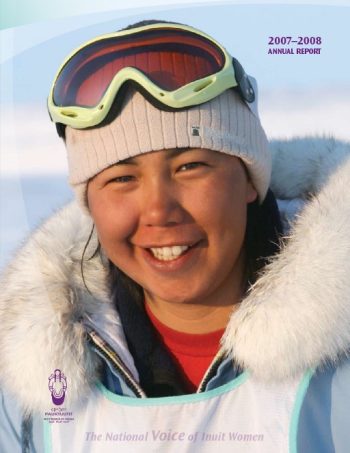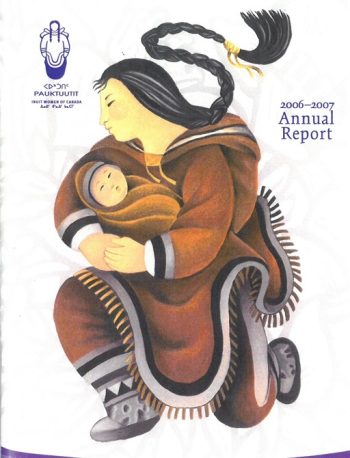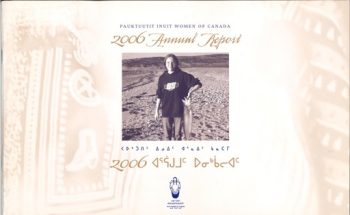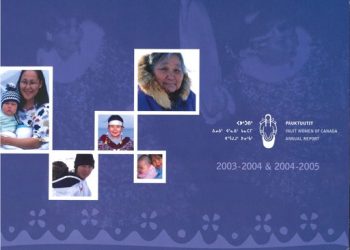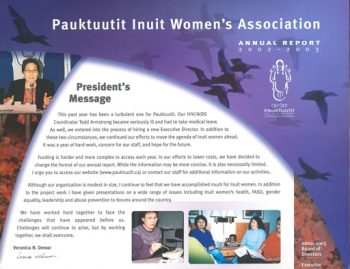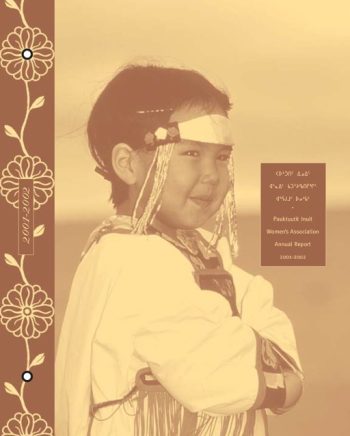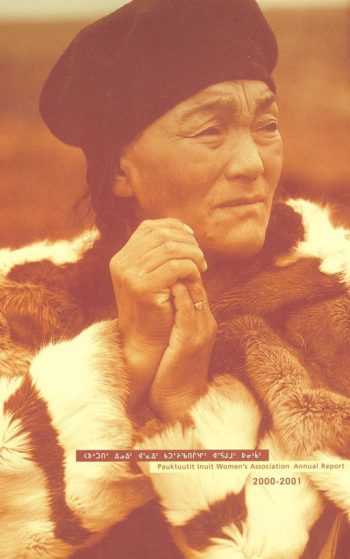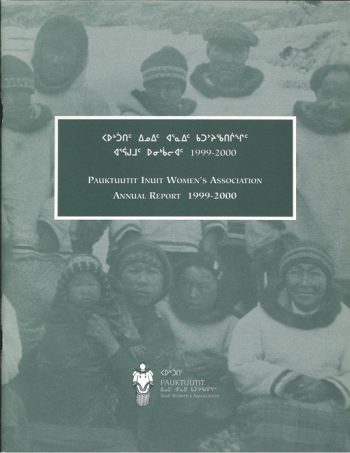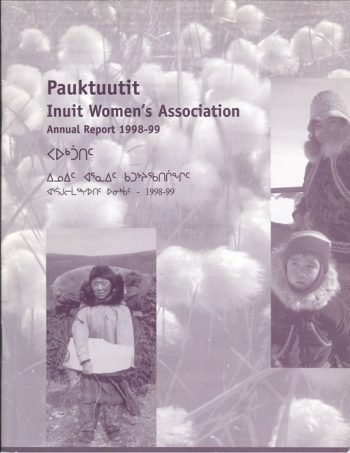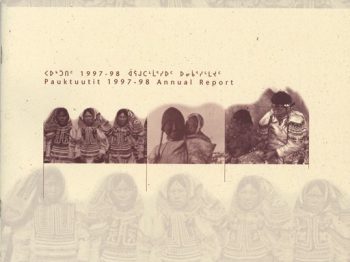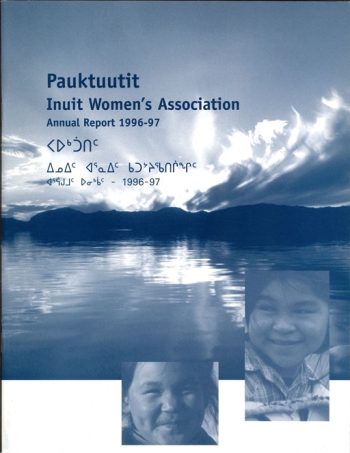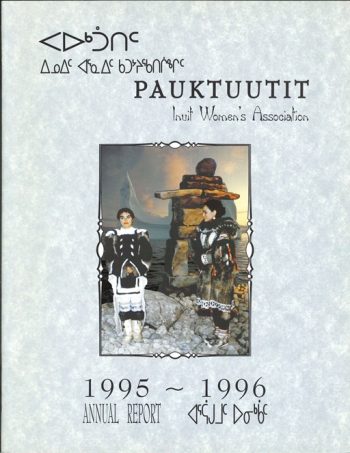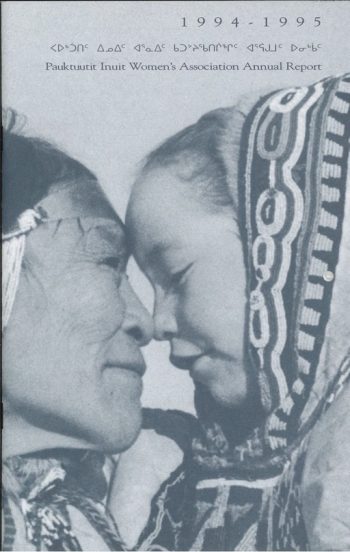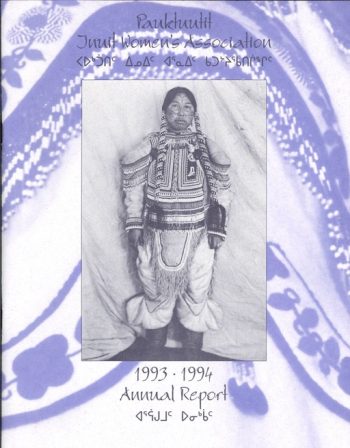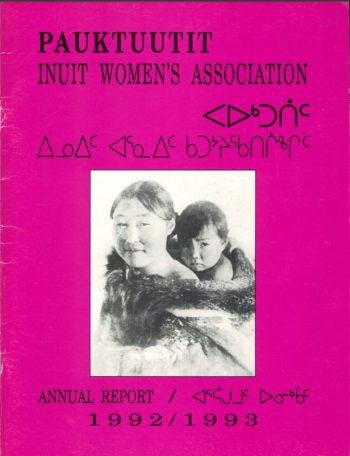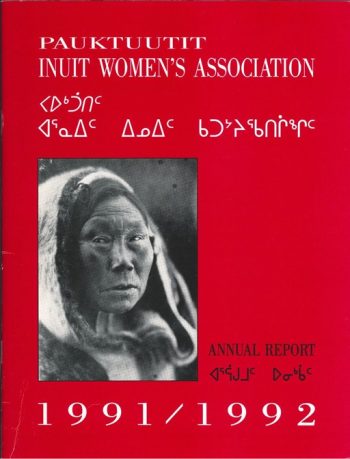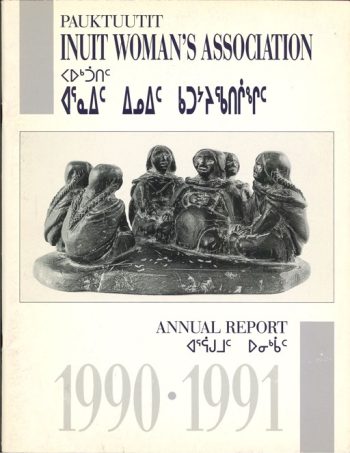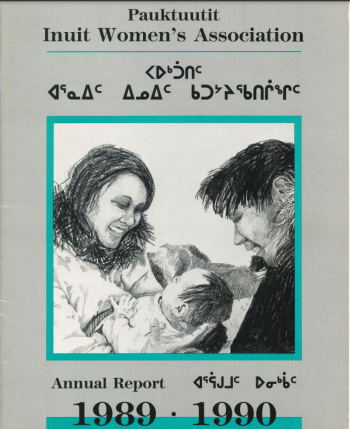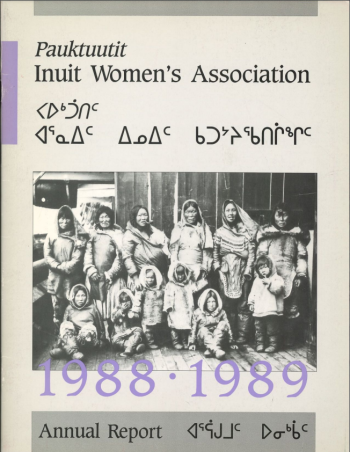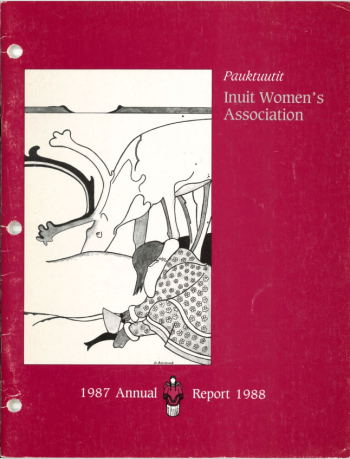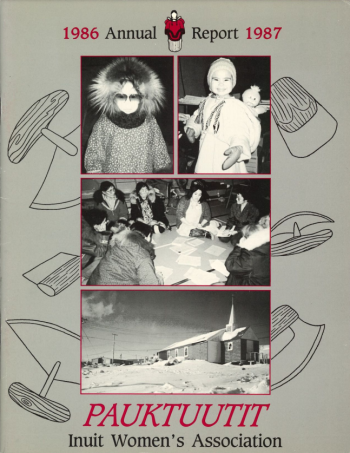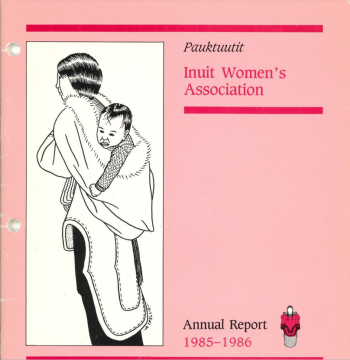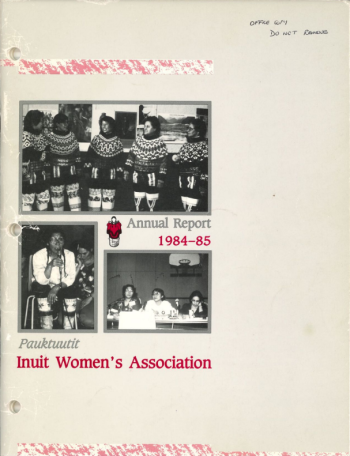Publications
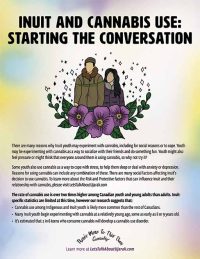
Inuit and Cannabis Use: Starting the conversation
Many factors influence Inuit decisions to use substances like cannabis, including our past experiences, current realities, and our culture. Learn more about these factors and how you can help open discussions around cannabis with your family or community.
https://pauktuutit.ca/wp-content/uploads/discussion-guideEN.pdf
Year Published September 2021
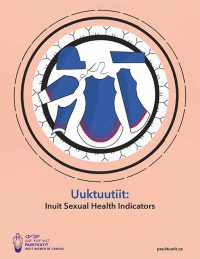
Uuktuutiit: Inuit Sexual Health Indicators
Uuktuutiit: Inuit Sexual Health Indicators, responds to the 2017 Tavva: Inuit Sexual Health Strategy objective for Inuit-specific surveillance of sexual health and is directed towards future research orientations. Uuktuutit touches on efforts described in the Ikajurniq: Cascade of Care to measure initiatives related to monitoring STBBIs but goes beyond by including other key aspects that effect sexual health and wellness such as, reducing sexual violence, providing more mental health services in communities and supporting gender and sexual diversity. While 15 indicators were selected by the National Inuit Sexual Health Network members to as the foci of Uuktuutit, it is important to note that there is not one single approach to measuring sexual health and that the selection and application of indicators must be regionally and community specific.
https://pauktuutit.ca/wp-content/uploads/Final-English-Uuktuutiit-aug2021-electronic-proof.pdf
https://pauktuutit.ca/wp-content/uploads/Uuktuutiit-French-electronic-apr2022.pdf
https://pauktuutit.ca/wp-content/uploads/Uuktuutiit-Inuinnaqtun-electronic-apr2022.pdf
https://pauktuutit.ca/wp-content/uploads/Uuktuutiit-Inuktitut-north-Baffin-electronic-mar2022.pdf
https://pauktuutit.ca/wp-content/uploads/Uuktuutiit-Inuktitut-south-baffin-electronic-sept2021.pdf
https://pauktuutit.ca/wp-content/uploads/Uuktuutiit-Inuvialuktun-electronic-mar2022.pdf
https://pauktuutit.ca/wp-content/uploads/Uuktuutiit-Labrador-Inuttut-mar2022-electronic.pdf
https://pauktuutit.ca/wp-content/uploads/Uuktuutiit-Nunavik-electronic-apr2022.pdf
Year Published: 2021
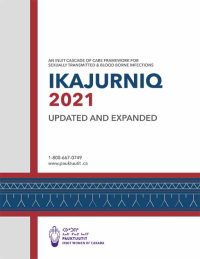
Ikajurniq 2021
The first version of Ikajurniq was published in 2018. It was conceptualized as a tool to inform Inuit of the various steps involved in sexual health education, testing, diagnosis and treatment, as well as guide healthcare services providers in culturally relevant and regionally specific approaches that provide safe and equitable delivery of care for Inuit. After feedback and engagement consultations with health care providers across Inuit Nunangat in 2019-2020, Ikajurniq has been updated and its framework expanded – Ikajurniq 2021 includes more information on the prevention, testing and treatment of infections that are spread through sexual contact and through blood as well as a new updated graphic depicting an Inuit-specific Cascade of Care.
https://pauktuutit.ca/wp-content/uploads/IKAJURNIQ-sept2021-electronic-final.pdf
Year Published: 2021
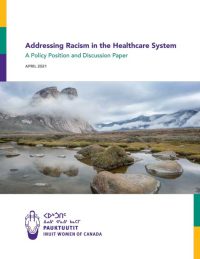
Addressing Racism in the Health Care System
Racism is an experience acutely felt by many Inuit women. This is especially true when they engage with the health care system where colonial and racist policies converge with erroneous assumptions based on negative stereotypes about Indigenous people.
This often means Inuit women experience sub-standard care, relative to other Canadians. It can also result in tragic outcomes for Inuit women, their families and communities.
Anti-racism is a process, a systematic method of analysis, and a proactive course of action rooted in the recognition of the existence of racism. A trauma-informed and distinctions-based approach, grounded through the lens of Inuit women and a GBA+ analysis, is critical to successfully address structural factors that continue to oppress Inuit in Canada, including when interacting with the health care system.
It is against this background that Pauktuutit presents its recommendations toward eliminating anti-Inuit racism in health care.
https://pauktuutit.ca/wp-content/uploads/Pauktuutit-Addressing-Racism-in-the-Health-Care-System-Apr2021.pdf
Year Published 2021
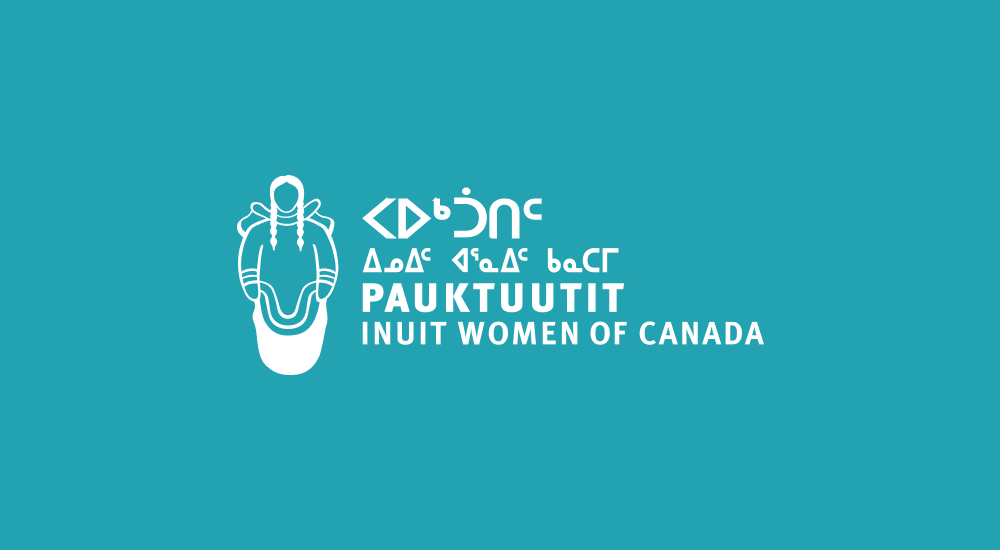
NATIONAL INUIT ACTION PLAN on Missing and Murdered Inuit Women, Girls and 2SLGBTQQIA+ People
The National Inuit Action Plan is dedicated to missing and murdered Inuit women, girls and 2SLGBTQQIA+ people and their families, friends and communities that have experienced these relentless tragedies.
Champions of this cause are often the families of missing and murdered Inuit women and girls.
The work we bring forward is grounded in creating positive change so no Inuk woman, girl, or any Inuk identifying as 2SLGBTQQIA+ has to experience this kind of violence and hardship.
- National Inuit Action Plan on MMIWG and 2SLGBTQQIA+ People – English
- National Inuit Action Plan on MMIWG and 2SLGBTQQIA+ People – Inuktitut Syllabics
- National Inuit Action Plan on MMIWG and 2SLGBTQQIA+ People – Inuktitut Roman Orthography
- National Inuit Action Plan on MMIWG and 2SLGBTQQIA+ People – French
- Executive Summary – National Inuit Action Plan – English
- Executive Summary – National Inuit Action Plan – Inuktitut Syllabics
- Executive Summary – National Inuit Action Plan – Inuktitut Roman Orthography
- Executive Summary – National Inuit Action Plan – French
- Backgrounder – National Inuit Action Plan – English
- Backgrounder – National Inuit Action Plan – Inuktitut Syllabics
- Backgrounder – National Inuit Action Plan – Inuktitut Roman Orthography
- Backgrounder – National Inuit Action Plan – French

Ikajuqatigiiniq Inuit Youth Pathways to Violence Prevention
Ikajuqatigiiniq: Youth Initiatives Toolkit intends to assist Inuit youth across Inuit Nunangat and urban centers to develop and facilitate their own youth camp or activity. In this toolkit, you will find templates and resources to ease the republication of these youth-focused events. Given the need for flexibility and relevance to your community, the toolkit allows you to choose which resources are best applicable in your context and adapt it to create additional activities for your camp or activity.
The project was funded by First Nations and Inuit Health Branch and Family Violence Prevention Program (FVPP) – Indigenous Serviced Canada.
https://pauktuutit.ca/wp-content/uploads/IkajuqatigiiniqToolkit_ENB_FINAL.pdf
https://pauktuutit.ca/wp-content/uploads/IkajuqatigiiniqToolkit_SB_FINAL.pdf
https://pauktuutit.ca/wp-content/uploads/IkajuqatigiiniqToolkit_NUNA_FINAL.pdf
Year Published 2021
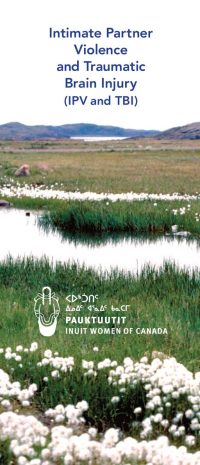
Intimate Partner Violence and Traumatic Brain Injury
Intimate partner violence (IPV, which can also be known as acts of violence with a personal partner) refers to the body, sexual, and personal/physical thinking acts of violent behaviour by a current or former intimate partner. Intimate partner violence traumatic brain injury (IPV TBI) can occur from any blow or outside force on the head, face or neck, or somewhere else on the body that causes a sudden jarring or shaking of the head. It may also occur when a person is choked or strangled leading to a less blood flow to the brain.
https://pauktuutit.ca/wp-content/uploads/Pauktuutit_IPV-TBI_Violence_Brochure_Kivalliq_1.pdf
https://pauktuutit.ca/wp-content/uploads/Pauktuutit_IPV-TBI_Violence_Brochure_NorthBaffin_1.pdf
Year Published 2021
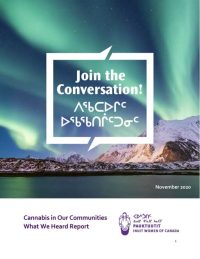
Cannabis in our Communities What We Heard Report
From January to November 2020, Pauktuutit engaged with Inuit women, their partners, and Youth (18-29 years) from across Inuit Nunangat and Canadian urban centres to learn more about their knowledge, attitudes and behaviours toward cannabis. The information collected through the online survey, focus groups and interviews are explained in this detailed ‘What We Heard’ Phase 1 Report.
https://pauktuutit.ca/wp-content/uploads/Cannabis-in-our-Communities-What-we-heard-Report-ENG.pdf
https://pauktuutit.ca/wp-content/uploads/Cannabis-in-our-Communities-What-we-heard-Report-South-Baffin.pdf
Year Published 2020
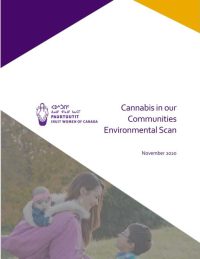
The Cannabis in our Communities Environmental Scan
This report describes cannabis related resources and supports that are currently available within and outside Inuit Nunangat, and explores how accessible and specific they are to Inuit.
https://pauktuutit.ca/wp-content/uploads/Cannabis-in-our-Communities-Environmental-Scan.pdf
Year Published 2020
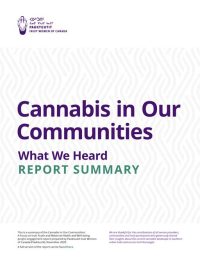
Cannabis in Our Communities What We Heard Report Summary
For a concise description of what we learned in Phase 1 about the knowledge, attitudes and behaviours of Inuit youth and new or expecting parents, read the ‘What We Heard’ Report Summary.
- https://pauktuutit.ca/wp-content/uploads/Cannabis-in-our-Communities-What-we-Heard-report-Summary-ENG.pdf
- https://pauktuutit.ca/wp-content/uploads/Cannabis-in-our-Communities-summary-report-South-Baffin-Inuktitut.pdf
- https://pauktuutit.ca/wp-content/uploads/Cannabis-in-our-communities-summary-report-Nunavik-Ungava.pdf
- https://pauktuutit.ca/wp-content/uploads/Cannabis-in-our-communities-summary-report-Inuvialuktun.pdf
- https://pauktuutit.ca/wp-content/uploads/Cannabis-in-our-communities-summary-report-Inuinnaqtun.pdf
Year Published 2020
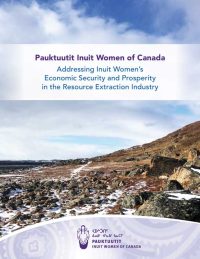
Addressing Inuit Women’s Economic Security and Prosperity in the Resource Extraction Industry
Inuit women have been working in the resource extraction industry for decades, often representing the largest proportion of female workers at mines in the North (Pauktuutit and UBC 2016). Historically, these worksites have been male-dominated, which can expose Inuit women to unequal opportunities in economic security and prosperity, as well as experiences of sexual violence and harassment in the workplace.
The foci of this report are three-fold, examining:
- Inuit women’s experiences of economic security and prosperity;
- Inuit women’s experiences of sexual violence and harassment in the resource extraction industry; and
- Inuit women’s knowledge of related policies and practices in the workplace.
This report builds on existing research that Pauktuutit completed in 2014, 2016 and 2020, which explored the impacts of resource extraction on Inuit women and families more broadly. This study aimed to illuminate the reality of workplace sexual violence and harassment for Inuit women in the North, as well as to identify gaps, opportunities and recommendations regarding Inuit women’s economic security and prosperity in Inuit Nunangat.
The results of this study are based on qualitative and quantitative survey data, which were completed by 29 women from Arviat (Nunavut), Salluit (Nunavik), Inuvik (Inuvialuit) and Baker Lake (Kivalliq).
https://pauktuutit.ca/wp-content/uploads/Addressing-Inuit-Womens-Economic-Security-Prosperity_Mar302021.pdf
Year Published 2021
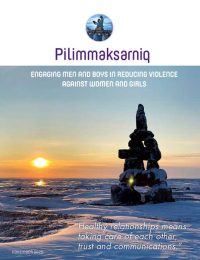
Pilimmaksarniq: Engaging Men and Boys in Reducing Violence Against Women and Girls – Phase II
The lesson learned from the Phase II activities of our Engaging Inuit Men and Boys in Reducing Violence Against Women and Girls project had informed and provided evidence for enhancing the Pilimmarksarniq toolkit.
The toolkit was revised to include the National Inuit Role Model Campaign, additional content and resources shared by our subject matter experts, and to create a more visually appealing and accessible document.
The project is meant to increase awareness and to strengthen coping skills among Inuit men and boys in an effort to reduce gender-based violence within Inuit communities. The toolkit is a set of documents that provide the information necessary to:
- Help assess community and individual readiness for healing and change;
- Identify a natural helper;
- Go about initial training and networking;
- Start a men’s group;
- Develop a group framework;
- Hold exercises and activities with participants to address issues such as self-awareness and self-esteem, anger, jealousy, unresolved trauma, etc.;
- Calculate program costs; and
- Organize program details such as, possible places to find funding, how to access the funding, finding a physical location, etc.
https://pauktuutit.ca/wp-content/uploads/EMB-Pilimmaksarniq-Toolkit-EN.pdf
Year Published 2020
